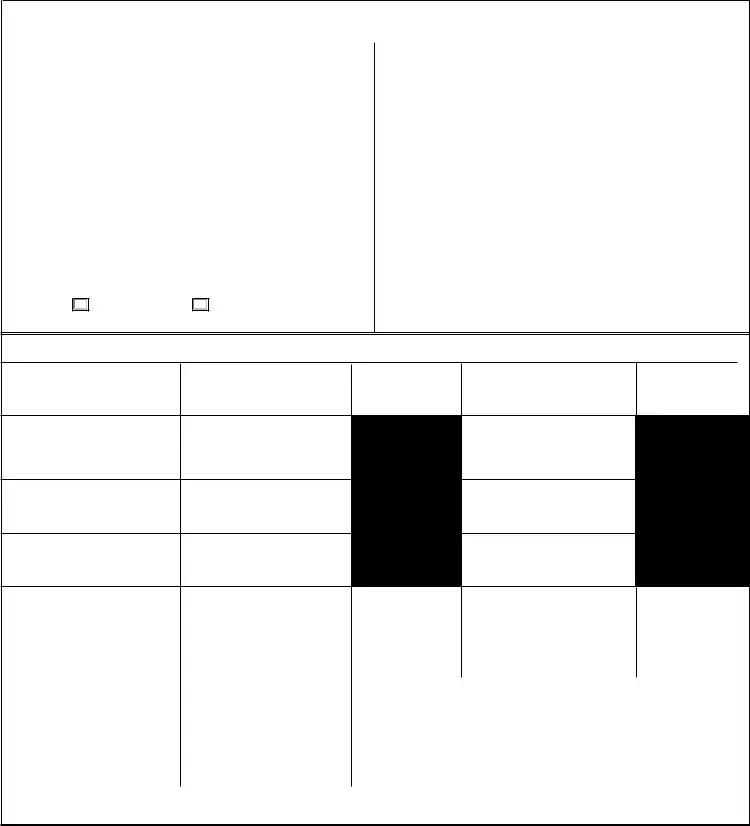The Schedule K-1 (Form 1065) from the IRS is closely related to the New Jersey Schedule NJK-1, as both forms are designed to report a partner's share of partnership income, deductions, and credits to the respective tax authorities. While the NJK-1 is specific to New Jersey, detailing a partner's income and losses that are taxable at the state level, the IRS Schedule K-1 serves a similar purpose on a federal scale. Each form requires information about the partnership and the partner's share of profit, loss, and other financial data.
The Schedule C (Form 1040) also shares similarities with the NJK-1, as both involve reporting income from business activities. However, Schedule C is used by sole proprietors or single-member LLCs to report business income and expenses to the IRS, whereas the NJK-1 is specifically for reporting a partner’s share of income and expenses from a partnership to the state of New Jersey.
Form 8865, Return of U.S. Persons With Respect to Certain Foreign Partnerships, parallels the NJK-1 in its aim to report income and financial data related to partnerships. Form 8865 is for international partnerships involving U.S. persons, capturing similar types of income and expense data on a global scale. Conversely, the NJK-1 is focused on providing this information to the New Jersey state tax authority for domestic partnership businesses.
The W-2 form, while primarily for reporting wages, taxes withheld, and other compensation to employees, has an indirect link to the NJK-1 in the income reporting process. Partners may receive guaranteed payments from the partnership, which could be likened to wages, and the W-2’s reporting structure provides a foundational comparison for understanding how individuals receive and report different types of income, despite the NJK-1 applying specifically to partnership distributive shares.
The 1040-NR form, used by non-resident aliens to file U.S. tax returns, shares a connection with the NJK-1 through its possible inclusion of income from partnerships operating within the United States. Non-resident New Jersey filers would use information from a form like NJK-1 to correctly report their state-taxable income from partnerships, underpinning the interconnection between state-specific and federal tax reporting requirements for international individuals.
Form 1120S, U.S. Income Tax Return for an S Corporation, and the NJK-1 have common ground in reporting business income, albeit for different types of entities. The 1120S is for S Corporations to report income, losses, and other financials to the IRS. Although the NJK-1 is for partnerships, both documents serve to attribute the business's financial activity to its owners or partners for tax purposes, specifying each individual's share.
The Schedule E (Form 1040) is used by taxpayers to report income from rental real estate, royalties, partnerships, S corporations, estates, trusts, and residual interests in REMICs. Its resemblance to the NJK-1 is seen through the section dedicated to reporting partnership and S corporation income, highlighting how individual partners or S corporation shareholders must report their portion of business income or loss on their personal tax returns.
Form 1065, U.S. Return of Partnership Income, serves as the foundation from which the NJK-1 form derives. Form 1065 is filed with the IRS to report a partnership's financial information, including income, deductions, and taxes. The NJK-1 complements this federal requirement by collecting and reporting a partner's share of these figures specifically for New Jersey state tax purposes, underlining the interdependence of state and federal tax obligations for partnerships.
The New Jersey Gross Income Tax Return (NJ-1040) intersects with the NJK-1 in the broader tax return process for individuals involved in partnerships. Partners in New Jersey must report their share of income—as detailed on the NJK-1—on their NJ-1040 forms, showcasing the role of the NJK-1 in completing state tax obligations and how it fits into the personal income tax reporting landscape in New Jersey.
